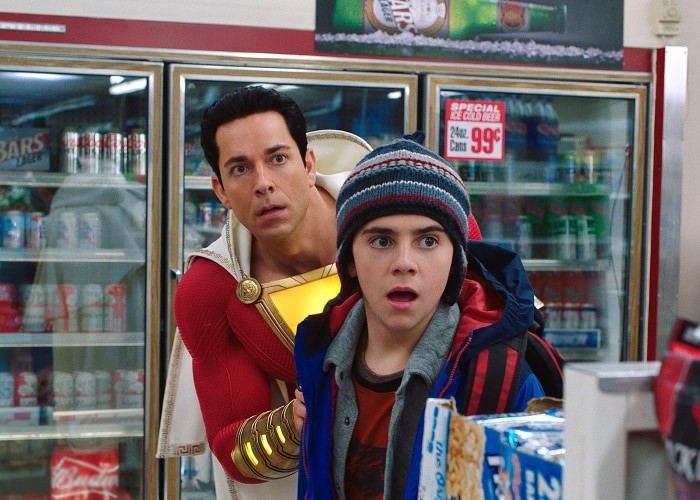
In the trailer for the upcoming Harley Quinn animated series on DC Universe, Poison Ivy says, “I thought we were supposed to make a show that was, like, super gritty, and bleak, and depressing. You know, like a DC thing.” Obviously, this is an attempt by DC to shed such an image, but it highlights pretty well the fact that, well, that is DC’s image. Ever since the washed-out colors and neck-snapping action of Man of Steel, DC films have been known as the dark n’ edgy superhero films.
The reputation is highly attributable to Zack Snyder and his apparent love of deconstructive superhero narratives. In a manner befitting the director of Watchmen, Snyder’s Man of Steel and Batman v Superman: Dawn of Justice tackle 1980s comic book themes that question the realistic impacts of superheroes on modern society, drawing from source material like the Dark Knight Returns comics. Deconstruction is all well and good, but before you can break down and examine a phenomenon you have to first establish and build it.
A handy way to understand this three-step progression of construction, deconstruction, and reconstruction is to refer to Christopher Nolan’s Dark Knight film trilogy. Batman Begins is about origins and how Batman visibly improves Gotham, The Dark Knight is about the negative repercussions and consequences of Batman, and The Dark Knight Rises is about reaffirming the positive aspects of Batman. A reconstruction takes into account the failings of the initial myth, but reiterates the value of that myth; after all, it would be worse for Gotham if there had never been a Batman at all.
Modern DC filmography has skipped over the entire “construction” phase of development. We never got to see a positive and hopeful Superman, so gloomy emo Supes seems less like a logical progression of his character in a world that is questioning the value of Superman. DC has since improved on this mistake retroactively with the films Wonder Woman and Aquaman, which construct their characters’ mythology from the ground up. But Shazam! is, perhaps, the first reconstructive superhero movie.
Shazam! tackles the superhero myth from an almost postmodern perspective. Similar to the movies in Phase 2 of the Marvel Cinematic Universe, superheroes are actively out and about in the world of Shazam!, as deuteragonist Freddy Freeman (Jack Dylan Grazer) is only too eager to point out, so the titular hero is just one among many.
As such, Billy Batson/Shazam (Asher Angel/Zachary Levi) spends a large amount of time being disruptive and indulging in antics that notably don’t involve saving people. In his superhero form, he spends the first act of the film goofing off and posting YouTube videos, and his first really heroic act is to save a bus that he himself put in danger.
In this way, Shazam! takes a lot of structural cues from kids’ movies like The Sandlot. The main antagonist is set up far away from our hero, which gives Shazam sitcom-like scenarios with which to indulge in hilarity. For the first half of the film, he is exactly the type of super-person that the Sokovia Accords in Marvel’s Captain America: Civil War are meant to control. The movie acknowledges that, yes, people running amok with superpowers is perhaps not the best thing in the world.
When Shazam! does reach its narrative turning point, however, the movie reaffirms the positive value of superheroes. Billy says, “A superhero who can’t save his family isn’t much of a hero,” a line reminiscent of the familiar Spider-Man quote, “With great power comes great responsibility.” Ultimately, Shazam does choose to use his powers for good and saves a bunch of people, and in doing so confirms that, yes, there is, in fact, a place in the DC Extended Universe for heroes and they can do good.
After all, in this age of pop-culture fandom and adults (like me) taking our comic book movies way too seriously, we have perhaps forgotten that superheroes are for kids. They’re people who run around in capes with their underpants over their spandex. Perhaps more importantly, they do things because those things are the right thing to do, regardless of consequence. This is the lesson that DC seems to have forgotten, what with the aforementioned neck-snapping and Batman’s wanton murder sprees, but Shazam! is different. It’s not wholly constructive and actually acknowledges the deconstruction of the superhero narrative.
Superheroes can absolutely cause problems in a realistic society, and superhuman powers can indeed be used for both good and evil, and anything in between. But Shazam! then reconstructs and reasserts that superheroes can accomplish good things, and, indeed, that they must do so to truly be heroes. Shazam is a hero because he uses his powers to help people. Sivana, who used his supernatural abilities only for his own vengeance, falls prey to those very powers and is defeated. The good guy does come out on top in the end, instead of being depressed about how he had to do what he had to do, and that goodness is celebrated!
Superheroes exist as a narrative way to teach and bring out the best in we fallible humans. To weep and wail about all the property damage Superman is causing as he saves the world runs counter to the point; that he could have sat by and done nothing and everyone would be dead, and that he chose instead to put his own life at risk to prevent that. In the words of late legend Stan Lee, “That person who helps others simply because it should or must be done, and because it is the right thing to do, is indeed without a doubt, a real superhero.”
Related Topics: batman v superman, DC Comics, DC Extended Universe, Shazam!

